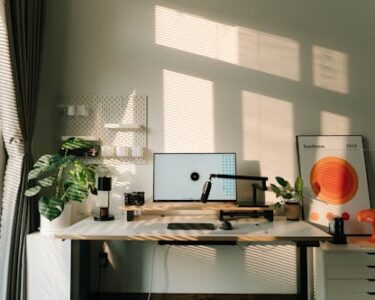“Shopping Guide: Creating Your Dream Minimalist Living Room
Tired of clutter and seeking a peaceful sanctuary within your home? A minimalist living room is the perfect solution, offering a calm, stylish, and highly functional space. Minimalism isn’t just about removing things; it’s about being intentional with what you keep and what you bring into your home. This shopping guide will help you curate the essential pieces to achieve a serene and beautiful **minimalist living room**.
Understanding the Core of a Minimalist Space
Before you start shopping, understand the philosophy: less is more. A minimalist living room prioritizes function, clean lines, and a sense of spaciousness. The first step is always decluttering. Remove anything that doesn’t serve a purpose or bring you genuine joy. This clears the way for intentional purchasing.
Shopping for Essential Furniture
In a minimalist living room, furniture should be practical, comfortable, and aesthetically pleasing with simple forms.
* **Sofa:** Choose a clean-lined sofa in a neutral color (grey, beige, white, navy). Look for quality construction that will last. Avoid overstuffed or overly decorative styles. Sectionals can work in larger spaces if they are kept simple and functional.
* **Coffee Table:** Opt for a simple design, perhaps with hidden storage. A round or rectangular table with clean lines works well. Consider materials like wood, metal, or glass.
* **Seating:** If space allows, add an armchair or a few simple stools. Again, prioritize clean design and comfort.
* **Storage:** Essential for keeping surfaces clutter-free. Look for closed storage like cabinets, sideboards, or ottomans with hidden compartments. Floating shelves can work for a few curated items, but avoid overcrowding them.
The Power of Color and Texture
A **minimalist living room** typically uses a restrained color palette.
* **Colors:** Stick to neutrals as your base – various shades of white, cream, grey, and beige. You can introduce one or two muted accent colors through cushions or artwork (e.g., soft blues, greens, terracotta).
* **Texture:** Since color is minimal, texture becomes crucial for adding warmth and depth. Incorporate textures through throws, pillows (linen, wool, cotton), a simple rug (jute, wool), or natural elements like wood and plants.
Lighting Your Minimalist Space
Lighting is key to creating atmosphere. Focus on simple, functional fixtures that provide ample light without being visually distracting. Combine ambient lighting (overhead), task lighting (reading lamp), and accent lighting (to highlight art or a plant). Natural light is highly valued; keep windows minimally dressed (simple blinds or sheer curtains).
Selecting Decor and Accessories Sparingly
This is where the ‘less is more’ rule is most visible.
* **Art:** Choose one or two impactful pieces rather than many small ones. Framed prints, abstract art, or photography can work.
* **Plants:** A few well-placed plants add life and color. Choose simple planters.
* **Accessories:** Limit decorative objects. Select a few meaningful items – a nice vase, a stack of books, a single candle. Every item should feel intentional.
Your Shopping Strategy
* **Quality Over Quantity:** Invest in fewer, well-made pieces that you love and that will stand the test of time.
* **Functionality:** Choose items that serve a purpose. Multi-functional furniture (like storage ottomans) is a bonus.
* **Measure:** Know your space before you shop to ensure furniture fits well and doesn’t make the room feel cramped.
* **Plan:** Visualize where each piece will go and how it contributes to the overall feeling of peace and order.
Arranging Your Minimalist Living Room
Once you have your curated items, arrange them intentionally. Embrace negative space – the empty areas are as important as the filled ones. Don’t push all furniture against the walls. Create a balanced layout that facilitates easy movement and conversation.
Creating a **minimalist living room** through careful shopping is a rewarding process. By focusing on essentials, quality, and thoughtful placement, you can create a calm, stylish, and comfortable space that promotes relaxation and well-being.”




